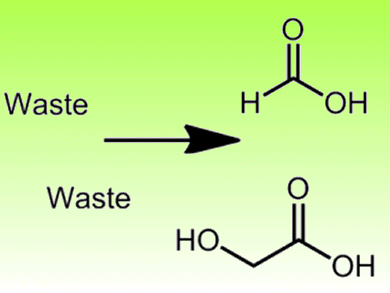Glycerol is a waste product in the conversion of natural lipids into biodiesel: It represents 10 % of the total amount of biodiesel produced. Aqueous solutions of glycerol are produced during the transesterification of lipids with methanol. The separation of glycerol from water is energy intensive so it is highly desirable to make use of the aqueous glycerol without purification.
Michele Aresta and co-workers, University of Bari, Italy, have used aqueous glycerol from biodiesel for the reduction of CO2: In the presence of [RuCl2(PPh3)3], glycerol behaved as an H-donor to CO2, producing formic acid and glycolic acid HO–CH2–COOH.
This reaction represents a new approach to CO2 hydrogenation by creating a renewable hydrogen source that avoids the use of H2 gas and simultaneously converts two waste products into potentially useful products.
- RuII-Mediated Hydrogen Transfer from Aqueous Glycerol to CO2: from Waste to Value-Added Products
A. Dibenedetto, P. Stufano, F. Nocito, M. Aresta,
ChemSusChem 2011.
DOI: 10.1002/cssc.201000434



